Menu
Physics Lesson 12.2.4 - Laws of Reflection
Please provide a rating, it takes seconds and helps us to keep this resource free for all to use
Welcome to our Physics lesson on Laws of Reflection, this is the fourth lesson of our suite of physics lessons covering the topic of Reflection of Light, you can find links to the other lessons within this tutorial and access additional physics learning resources below this lesson.
Laws of Reflection
First we must introduce the concept of normal line which is very helpful when dealing with the laws of reflection. Thus, normal line is a line that starts at the point in which the light ray touches the surface and is perpendicular to this surface as shown in the figure.
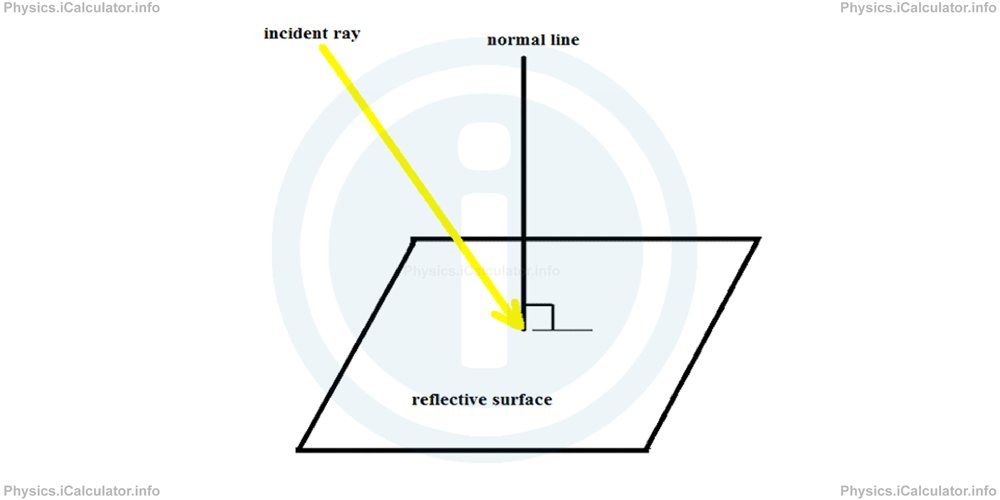
Said this, we will now explain the two laws of reflection.
1. Incident ray, reflected ray and the normal line lie all at the same plane
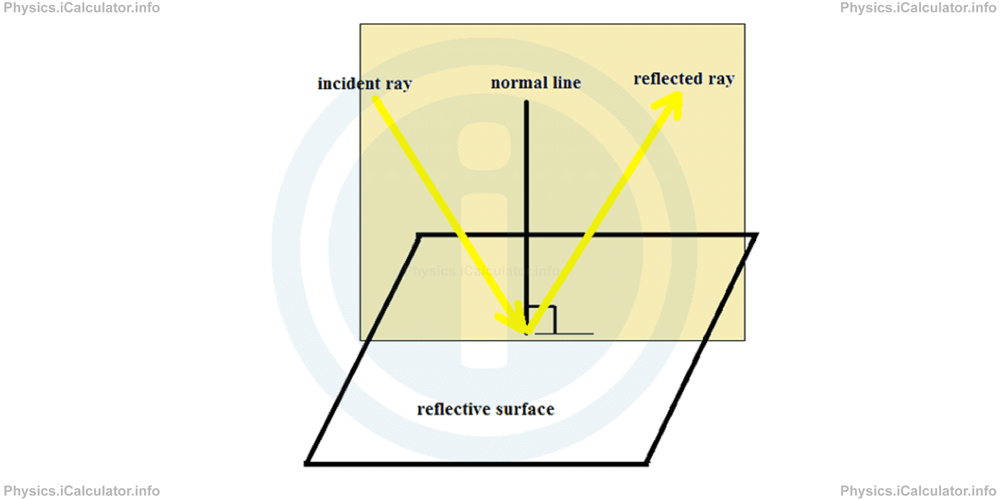
This means if you observe the situation from aside you will see only one ray.
2. The incident angle is equal to the reflection angle
The above angles are taken from the given ray to the normal line, not from the ray to the reflecting surface. This avoids issues arisen from irregular reflecting surfaces in calculating the angles.
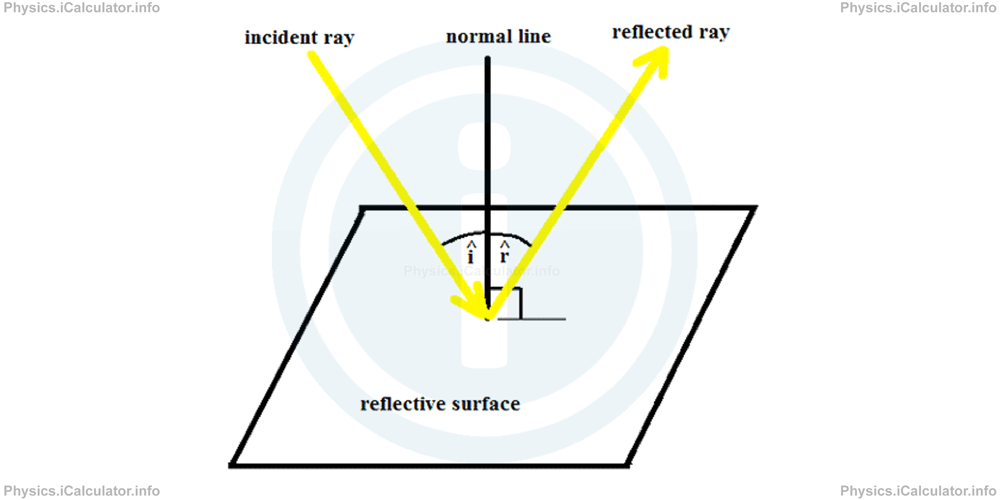
In the figure above, î = ȓ based on the second law of reflection. This law is very important in determining the path direction of light rays after reflection.
Example 1
Two flat mirrors are placed at 1000 to each other and the incident ray forms a 700 angle to the first mirror as shown in the figure.
What is the angle formed by the reflecting ray on the second mirror to the surface of this mirror?
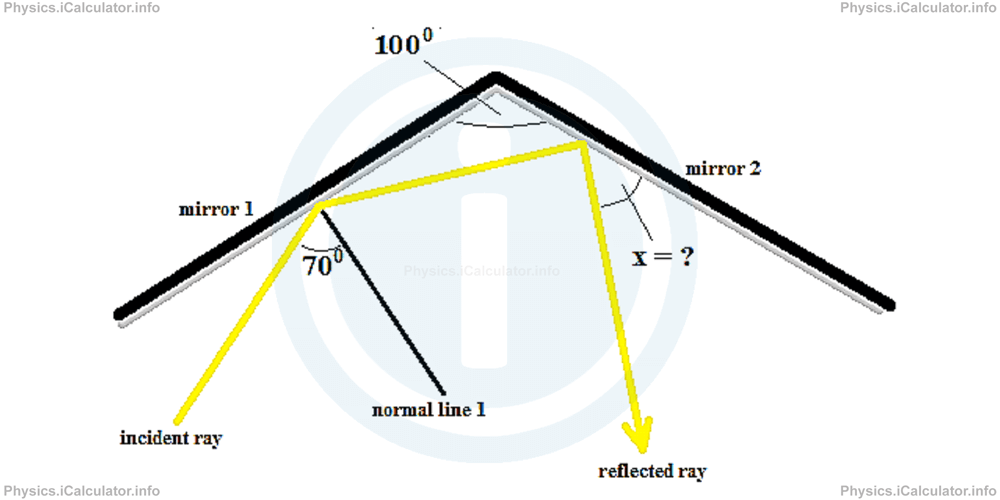
Solution 1
From the 2nd Law of Reflection, it is clear that the reflection angle to the first mirror is 700 as well. Therefore, its complementary angle is 900 - 700 = 200.
In the triangle formed by the two mirrors and the reflected ray to the first mirror, we therefore have two known angles: 200 and 1000. Hence, the third angle in this triangle will be
= 1800 - 1200
= 600
Again, based on the 2nd Law of reflection, it is easy to deduce that this value corresponds to the unknown angle x. Thus, we have x = 600.
Look at the figure in which the values of all angles involved are shown.
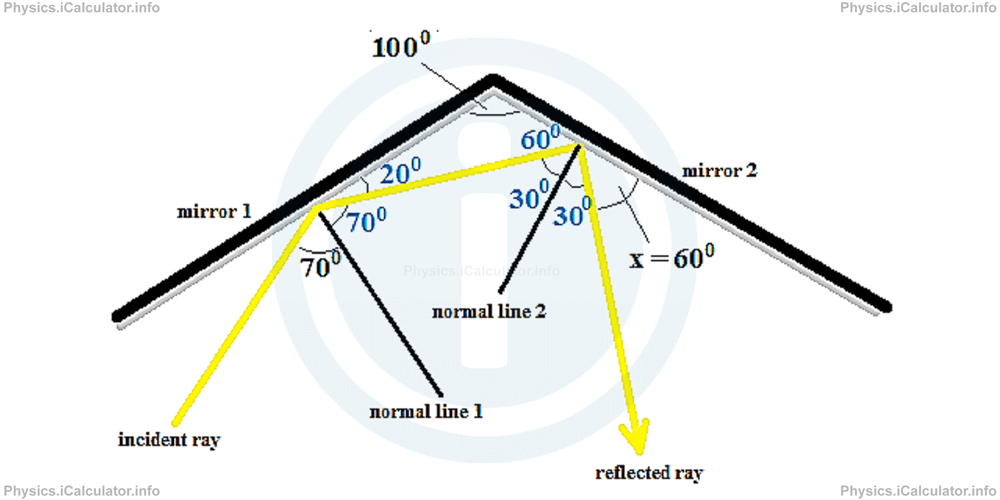
You have reached the end of Physics lesson 12.2.4 Laws of Reflection. There are 4 lessons in this physics tutorial covering Reflection of Light, you can access all the lessons from this tutorial below.
More Reflection of Light Lessons and Learning Resources
Whats next?
Enjoy the "Laws of Reflection" physics lesson? People who liked the "Reflection of Light lesson found the following resources useful:
- Law Feedback. Helps other - Leave a rating for this law (see below)
- Optics Physics tutorial: Reflection of Light. Read the Reflection of Light physics tutorial and build your physics knowledge of Optics
- Optics Revision Notes: Reflection of Light. Print the notes so you can revise the key points covered in the physics tutorial for Reflection of Light
- Optics Practice Questions: Reflection of Light. Test and improve your knowledge of Reflection of Light with example questins and answers
- Check your calculations for Optics questions with our excellent Optics calculators which contain full equations and calculations clearly displayed line by line. See the Optics Calculators by iCalculator™ below.
- Continuing learning optics - read our next physics tutorial: Refraction of Light
Help others Learning Physics just like you
Please provide a rating, it takes seconds and helps us to keep this resource free for all to use
We hope you found this Physics lesson "Reflection of Light" useful. If you did it would be great if you could spare the time to rate this physics lesson (simply click on the number of stars that match your assessment of this physics learning aide) and/or share on social media, this helps us identify popular tutorials and calculators and expand our free learning resources to support our users around the world have free access to expand their knowledge of physics and other disciplines.